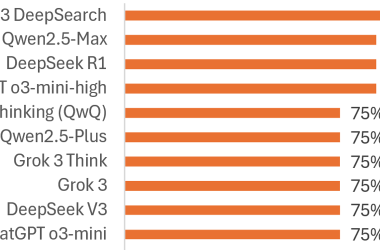Kubernetes follows a master–worker (control-plane / node) model.
At a high level:
- Control Plane = Brain of the cluster
- Worker Nodes = Muscles that run applications
- Pods = Smallest deployable units
- Kubelet / Kube-Proxy / CRI = Agents that make nodes obey the control plane
🧠 1. Control Plane Components (The Brain of Kubernetes)
The Control Plane makes all decisions:
- Where to run containers
- How many replicas
- How to roll out updates
- How to recover from failures
🔹 1.1 API Server (kube-apiserver)
The front door of Kubernetes
- All commands (
kubectl, UI, controllers) go through the API Server - Validates and processes all API requests
- Exposes the entire Kubernetes REST API
Analogy: Like a receptionist + gatekeeper.
🔹 1.2 etcd (Distributed Key-Value Store)
The source of truth of the entire cluster
- Stores all cluster data: pods, nodes, configs, secrets
- Highly consistent and fault-tolerant
- Every Kubernetes state lives in etcd
Analogy: A very reliable database for the cluster’s brain.
🔹 1.3 Scheduler (kube-scheduler)
Decides which node will run a new Pod
It checks:
- CPU / memory availability
- Node labels
- Taints & tolerations
- Affinity/anti-affinity rules
Analogy: A job scheduler assigning workers to tasks.
🔹 1.4 Controller Manager (kube-controller-manager)
Ensures the “desired state” matches the “actual state”
Includes several controllers:
- Node Controller
- Deployment Controller
- ReplicaSet Controller
- Endpoint Controller
- Job Controller
Function:
If you say “I want 5 replicas,” this ensures 5 always exist.
Analogy: A supervisor constantly checking if everything is correct.
🔹 1.5 Cloud Controller Manager
Integrates Kubernetes with cloud platforms (AWS, GCP, Azure)
Responsible for:
- Load balancers
- Node life cycle
- Route management
- Persistent volumes
⚙️ 2. Worker Node Components (Where Your Apps Actually Run)
Each worker node runs:
- Pods
- Container runtime
- Network proxies
- Node-level agents
🔹 2.1 Kubelet
The agent that runs on every worker node
Responsibilities:
- Receives Pod definitions from API server
- Starts containers via container runtime
- Performs health checks
- Reports status back to the control plane
Analogy: A local manager following central instructions.
🔹 2.2 Kube-Proxy
Handles networking and forwarding traffic inside the cluster
- Maintains network rules
- Handles Service discovery & load balancing
- Manages cluster IP routing
🔹 2.3 Container Runtime
The actual software that runs containers
Kubernetes supports multiple:
- containerd
- CRI-O
- Docker (deprecated for direct integration)
Role: Pull images, start containers, manage storage & network namespaces.
📦 3. Kubernetes Objects (Running Your Application)
🔹 3.1 Pods
Smallest deployable unit in Kubernetes.
Contains 1 or more containers that share:
- Networking
- Storage
- Lifecycle
🔹 3.2 ReplicaSets
Ensure a specific number of pod replicas always run.
🔹 3.3 Deployments
Most common way to run stateless apps
Provide:
- Rolling updates
- Rollbacks
- Scaling
🔹 3.4 Services
Stable endpoint for connecting to pods.
Types:
- ClusterIP
- NodePort
- LoadBalancer
- Headless services
🔹 3.5 ConfigMaps & Secrets
Externalize app configuration and sensitive data.
🔹 3.6 Ingress
Layer 7 (HTTP/HTTPS) traffic routing.
🕸️ 4. Kubernetes Networking Model (High Level)
Kubernetes networking ensures:
- Every Pod gets its own unique IP
- Pods can talk to each other without NAT
- Nodes can talk to Pods
- Services provide stable virtual IPs
Networking is implemented by CNI plugins like:
- Calico
- Flannel
- Cilium
- Weave
🧩 5. Putting It All Together — How Kubernetes Actually Works
- You deploy a YAML saying
3 replicas of nginx. - API Server stores this in
etcd. - Scheduler finds suitable nodes for the 3 Pods.
- Kubelet on each node pulls images & starts containers.
- Kube-Proxy sets up networking & load balancing.
- Controllers continuously check:
- Are 3 pods running?
- Are they healthy?
- Is an update rolling out?
- If a node crashes:
- Controller notices
- Scheduler creates replacement Pods elsewhere
- Zero manual intervention
This is desired state management — the core of Kubernetes.
🧠 Summary Table (Interview Perfect)
| Component | Plane | Function |
|---|---|---|
| API Server | Control | Cluster entry point, REST API |
| etcd | Control | Stores cluster state |
| Scheduler | Control | Chooses nodes for Pods |
| Controller Manager | Control | Maintains desired state |
| Cloud Controller | Control | Cloud integration |
| Kubelet | Worker | Runs containers & reports status |
| Kube-Proxy | Worker | Networking & load balancing |
| Runtime | Worker | Pulls images & runs containers |


